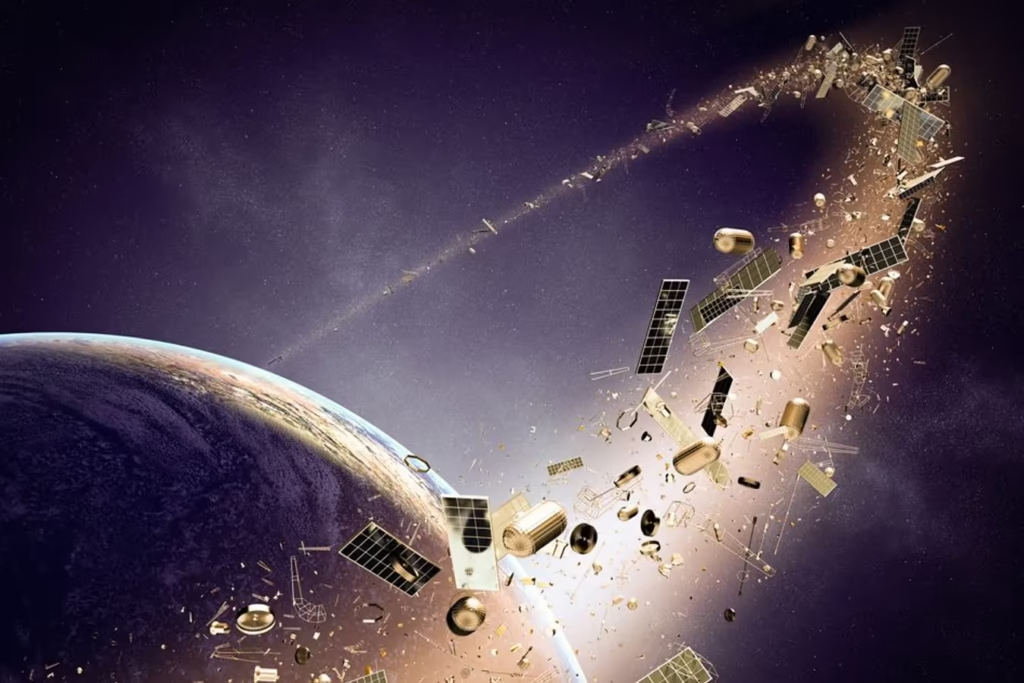The Kessler Pattern A Brewing Trouble in Space Exploration
external space, frequently regarded as bottomless, is increasingly becoming crowded and precarious. With thousands of satellites, abandoned rocket stages, and innumerous fractions of space debris, humanity faces a significant challenge the Kessler Syndrome. This script, a term chased by NASA scientist Donald J. Kessler in 1978, highlights the troubles of slinging collisions in the low Earth route( LEO). It’s a problem that demands critical attention as it poses serious pitfalls to both space disquisition and life on Earth.
Understanding Kessler Syndrome
The Kessler Syndrome describes a chain response where collisions between ringing objects induce debris, leading to further collisions. Over time, this slinging effect could render certain routes unworkable. The primary concern is the viscosity of debris in LEO, where satellites for dispatches, navigation, and rainfall monitoring operate.
Each collision produces fractions that travel at incredibly high rapidity — over 28,000 km/ h. At similar pets, indeed a bitsy piece of debris can beget disastrous damage to functional spacecraft, creating yet more debris and immortalizing the cycle.
The Growing Problem of Space Debris
Space debris includes defunct satellites, spent rocket stages, and fractions from accidental or purposeful collisions. It’s estimated that there are over 36,000 objects larger than 10 cm ringing Earth, alongside millions of lower fractions. These pose a patient trouble to active satellites and manned operations.
Several factors contribute to the accumulation of space debris
Increased Satellite LaunchesMega-constellations, similar to SpaceX’s Starlink, have led to the deployment of thousands of satellites annually.
Defunct Spacecraft and numerous aging or non-operational satellites remain in route for decades.
Collisions and Explosions Incidents like the 2009 Iridium- Cosmos collision have created thousands of debris fractions.
Anti-Satellite Tests Nations conducting tests that destroy satellites contribute significantly to the debris problem.
Why It Matters
The counteraccusations of the Kessler Syndrome extend far beyond space disquisition. The goods could disrupt ultramodern life on Earth, which heavily depends on satellites for essential services.
Loss of Satellite Services A debris waterfall could destroy satellites critical for GPS, internet, communication, and rainfall soothsaying.
trouble to Astronauts Space debris poses a grave threat to astronauts aboard spacecraft or the International Space Station( ISS). Indeed small fractions can access shielding at high rapidity.
profitable Consequences Damaged or destroyed satellites mean billions of bones in losses for diligence reliant on space-grounded technologies.
confined Space Access Future space operations might face advanced costs and increased pitfalls due to crowded and dangerous routes.
mollifying the Kessler Syndrome
Addressing the Kessler Pattern requires visionary measures and transnational collaboration. Governments, private companies, and exploration institutions are working on strategies to alleviate the growing space debris problem.
Active Debris junking( ADR) This involves using technologies like robotic arms, nets, or spotlights to capture and deorbit debris. For this case, Japan’s JAXA is testing tether technology to guide debris into the atmosphere for safe burn-up.
Advanced Tracking Systems Advanced tracking technologies can cover debris movement, allowing satellites to perform fugitive pushes to avoid collisions.
Sustainable Satellite Design Modern satellites are being equipped with deorbiting mechanisms that ensure they re-up the Earth’s atmosphere at the end of their functional lives.
International programs Associations like the United Nations Office for External Space Affairs( UNOOSA) and the Inter-Agency Space Debris Coordination Committee(IADC) are promoting global guidelines for responsible space geste.
Inventions in Space Debris Operation
Arising technologies offer a stopgap for addressing the Kessler Syndrome. These innovative results aim to make space cleaner and safer for unborn generations.
Electrodynamic Tethers These biases induce electrical currents in Earth’s glamorous field to produce drag, guiding defunct satellites into lower routeways for re-entry.
Biodegradable Satellites Experimenters are exploring satellites made from accouterments that disintegrate upon re-entry, reducing long-term debris pitfalls.
Recycling in Space Transforming debris into raw accouterments for erecting new spacecraft or satellites is a futuristic but promising conception.
Ray Systems High-powered spotlights could be used to nudge debris into lower routeways or decimate lower fractions.
The part of Private Companies
As private enterprises like SpaceX, Amazon, and OneWeb lead the charge in satellite launches, they have a critical responsibility to borrow sustainable practices. Companies must prioritize satellite designs that minimize debris and share in global sweat to clean up debris.
For case, SpaceX’s Starlink satellites are designed with independent collision avoidance systems and deorbiting capabilities. similar measures, if extensively espoused, can significantly reduce the threat of the Kessler Syndrome becoming a reality.
Raising Mindfulness and Funding Research
Public mindfulness about the pitfalls of space debris and the Kessler Syndrome is essential. Governments must allocate backing for the exploration and development of debris mitigation technologies. Educational juggernauts can help the public understand why guarding orbital space is as pivotal as conserving Earth’s ecosystems.
The Kessler Syndrome isn’t just a problem for astronauts or space agencies; it’s a global issue that affects communication, navigation, and security on Earth. working it requires a unified trouble, combining innovative technologies, transnational cooperation, and responsible space disquisition practices. By acting now, we can ensure that space remains a feasible frontier for future generations.
TOI ARTICLE Click Here

